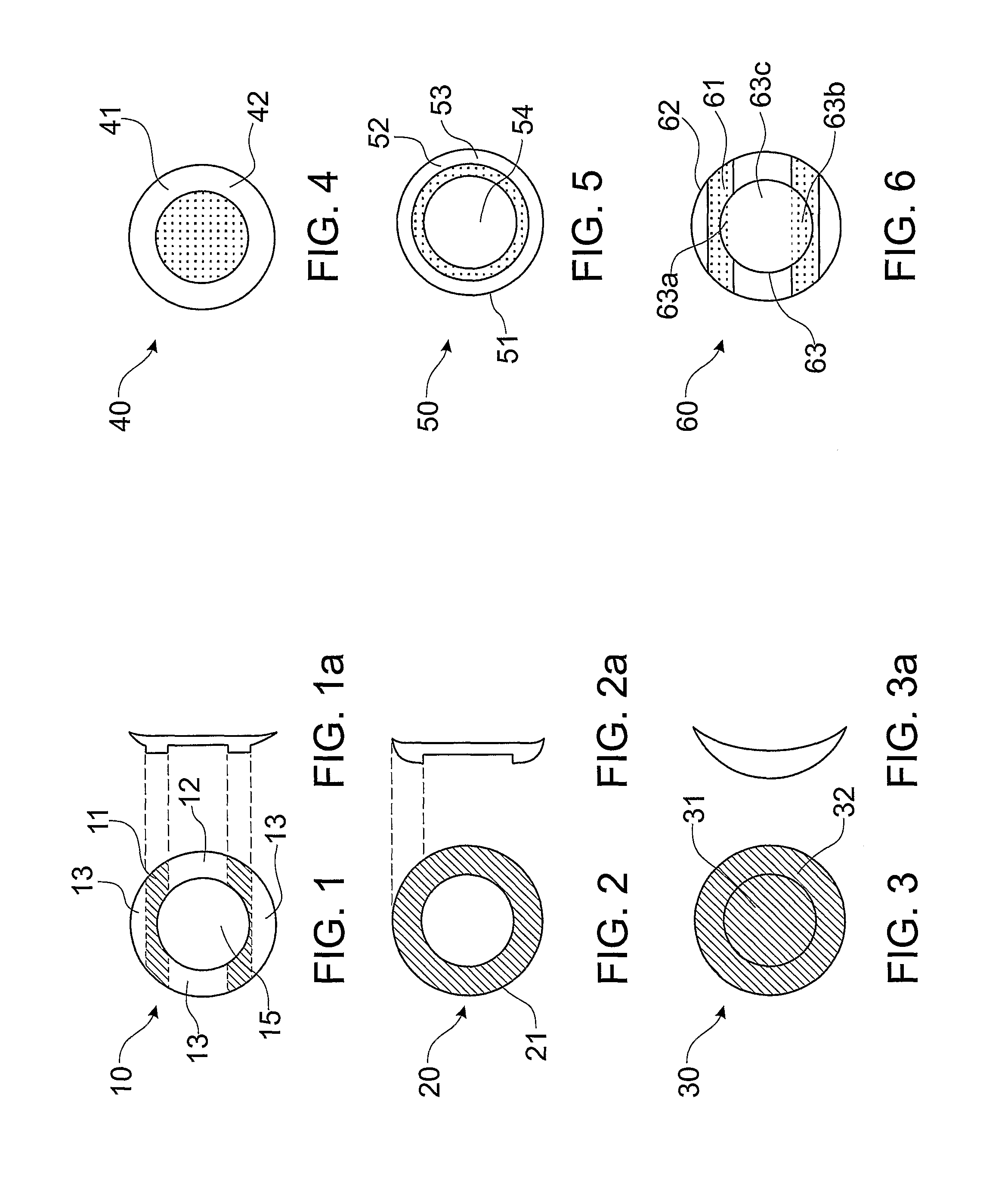Control of myopia using contact lenses
a technology of contact lenses and myopia, which is applied in the field of myopia control, can solve the problems of blurred vision, blurred vision, and blurred vision of distant objects
- Summary
- Abstract
- Description
- Claims
- Application Information
AI Technical Summary
Benefits of technology
Problems solved by technology
Method used
Image
Examples
examples
[0120]As mentioned earlier in the description experiments were conducted to examine the relationship between near work, eyelid pressure and myopia development. The experimental results shown in Table 1 show the relative effects on corneal optics of three near work tasks, reading, microscopy and computer work. Of these near work tasks reading and microscopy are known risk factors for myopia development whereas computer work is not associated with myopia development.
[0121]FIG. 11 and FIG. 12, further demonstrate the association between force applied to the eye by the eyelids, near work and myopia. FIG. 11 and FIG. 12 both appear in Collins et al., where the experimental protocols used to produce FIG. 11 and FIG. 12 are detailed (Collins M. J., Kloevekorn-Norgall K., Buehren T., Voetz S. C. and Lingelbach B., (2005), Regression of lid-induced corneal topography changes following reading, Optometry and Vision Science; 82(9): 843-849). These experimental protocols and the results and dis...
PUM
 Login to View More
Login to View More Abstract
Description
Claims
Application Information
 Login to View More
Login to View More - R&D
- Intellectual Property
- Life Sciences
- Materials
- Tech Scout
- Unparalleled Data Quality
- Higher Quality Content
- 60% Fewer Hallucinations
Browse by: Latest US Patents, China's latest patents, Technical Efficacy Thesaurus, Application Domain, Technology Topic, Popular Technical Reports.
© 2025 PatSnap. All rights reserved.Legal|Privacy policy|Modern Slavery Act Transparency Statement|Sitemap|About US| Contact US: help@patsnap.com



